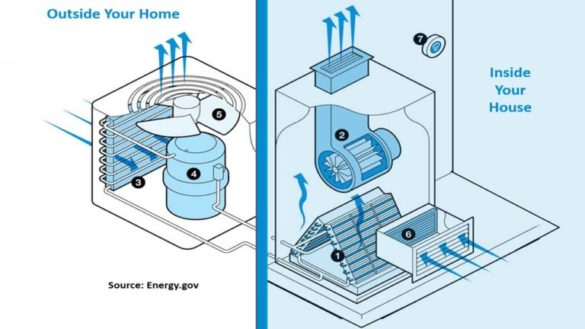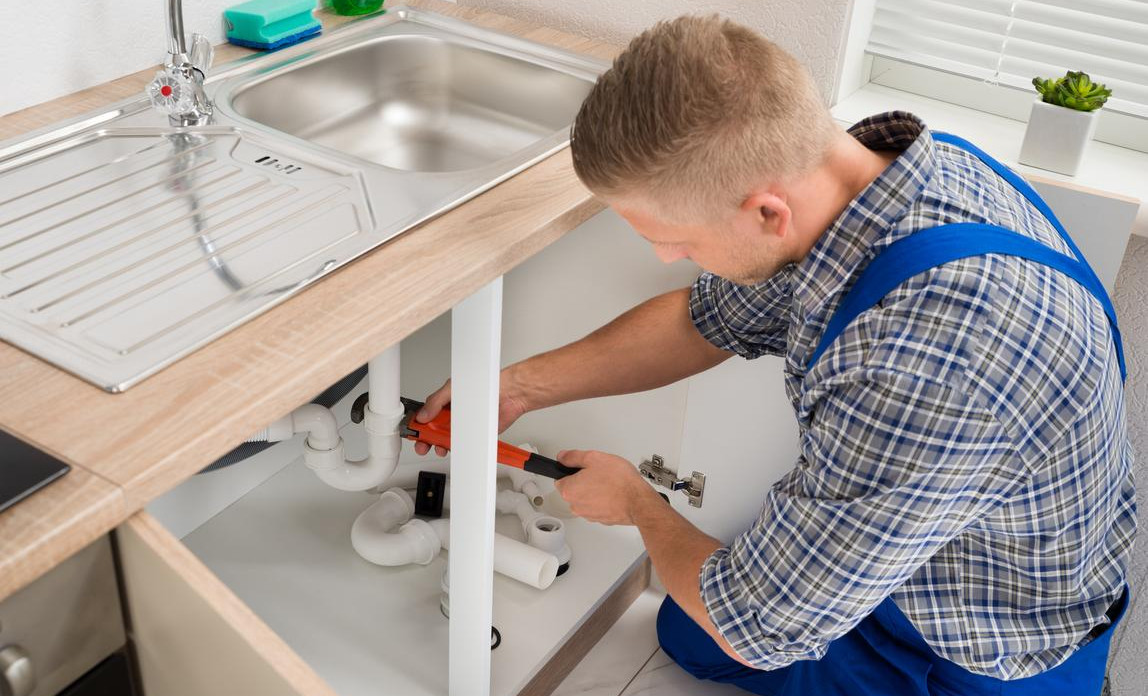How to Understand Your Property's Plumbing System Anatomy
How to Understand Your Property's Plumbing System Anatomy
Blog Article
Almost everyone has got their own unique theory involving Plumbing Installation 101: All You Need to Know.

Comprehending how your home's pipes system functions is crucial for every single property owner. From delivering tidy water for drinking, food preparation, and showering to safely getting rid of wastewater, a well-kept pipes system is important for your family's wellness and comfort. In this detailed guide, we'll discover the elaborate network that makes up your home's pipes and offer ideas on maintenance, upgrades, and taking care of typical issues.
Introduction
Your home's pipes system is more than simply a network of pipes; it's an intricate system that ensures you have accessibility to clean water and reliable wastewater removal. Recognizing its components and just how they work together can aid you prevent pricey repairs and make sure everything runs smoothly.
Standard Components of a Pipes System
Pipes and Tubes
At the heart of your pipes system are the pipes and tubes that carry water throughout your home. These can be made from various materials such as copper, PVC, or PEX, each with its benefits in terms of longevity and cost-effectiveness.
Fixtures: Sinks, Toilets, Showers, and so on.
Components like sinks, bathrooms, showers, and bath tubs are where water is used in your home. Recognizing how these components attach to the plumbing system assists in detecting problems and preparing upgrades.
Shutoffs and Shut-off Points
Shutoffs regulate the flow of water in your plumbing system. Shut-off shutoffs are crucial during emergency situations or when you need to make repairs, allowing you to isolate parts of the system without interrupting water circulation to the whole residence.
Water System
Key Water Line
The major water line connects your home to the metropolitan supply of water or an exclusive well. It's where water enters your home and is dispersed to various fixtures.
Water Meter and Stress Regulator
The water meter procedures your water use, while a pressure regulator guarantees that water moves at a secure pressure throughout your home's plumbing system, avoiding damages to pipelines and components.
Cold Water vs. Hot Water Lines
Recognizing the difference between cold water lines, which supply water directly from the primary, and hot water lines, which lug warmed water from the water heater, helps in troubleshooting and planning for upgrades.
Drain System
Drain Pipes Piping and Traps
Drain pipelines lug wastewater away from sinks, showers, and toilets to the sewer or septic tank. Traps avoid drain gases from entering your home and likewise catch particles that can create obstructions.
Air flow Pipelines
Ventilation pipes allow air into the drain system, avoiding suction that might slow down drainage and cause catches to vacant. Appropriate ventilation is essential for keeping the honesty of your pipes system.
Significance of Proper Drain
Guaranteeing appropriate drain avoids back-ups and water damages. Consistently cleansing drains pipes and maintaining catches can stop expensive repairs and expand the life of your pipes system.
Water Heating Unit
Types of Hot Water Heater
Water heaters can be tankless or traditional tank-style. Tankless heating units warmth water as needed, while storage tanks keep heated water for immediate usage.
Updating Your Plumbing System
Reasons for Updating
Updating to water-efficient fixtures or replacing old pipelines can boost water high quality, decrease water bills, and raise the worth of your home.
Modern Plumbing Technologies and Their Benefits
Discover modern technologies like wise leak detectors, water-saving commodes, and energy-efficient hot water heater that can save money and lower ecological impact.
Price Factors To Consider and ROI
Determine the upfront prices versus long-lasting savings when taking into consideration pipes upgrades. Numerous upgrades pay for themselves via decreased energy expenses and fewer repair services.
Exactly How Water Heaters Attach to the Plumbing System
Recognizing how hot water heater connect to both the cold water supply and warm water circulation lines helps in identifying issues like inadequate hot water or leaks.
Upkeep Tips for Water Heaters
Routinely purging your water heater to remove debris, checking the temperature level settings, and checking for leaks can extend its life expectancy and improve power efficiency.
Usual Plumbing Concerns
Leaks and Their Reasons
Leaks can take place due to maturing pipes, loosened fittings, or high water pressure. Attending to leaks quickly avoids water damages and mold and mildew development.
Obstructions and Blockages
Clogs in drains and toilets are frequently triggered by purging non-flushable products or a build-up of oil and hair. Making use of drainpipe displays and bearing in mind what drops your drains pipes can avoid obstructions.
Signs of Pipes Troubles to Watch For
Low tide stress, sluggish drains pipes, foul odors, or unusually high water expenses are indicators of prospective pipes problems that ought to be resolved promptly.
Plumbing Maintenance Tips
Normal Inspections and Checks
Arrange yearly pipes inspections to catch concerns early. Look for signs of leakages, deterioration, or mineral buildup in faucets and showerheads.
Do It Yourself Upkeep Tasks
Straightforward tasks like cleaning tap aerators, looking for toilet leaks using color tablet computers, or protecting subjected pipes in cold climates can protect against significant pipes problems.
When to Call a Professional Plumbing Professional
Know when a pipes problem needs professional experience. Trying complicated repair work without proper expertise can bring about even more damage and higher fixing expenses.
Tips for Decreasing Water Usage
Straightforward routines like taking care of leaks promptly, taking much shorter showers, and running full loads of washing and dishes can preserve water and reduced your utility bills.
Eco-Friendly Pipes Options
Think about sustainable pipes materials like bamboo for floor covering, which is durable and environment-friendly, or recycled glass for countertops.
Emergency situation Preparedness
Actions to Take Throughout a Plumbing Emergency situation
Know where your shut-off valves lie and exactly how to turn off the water in case of a burst pipe or significant leak.
Relevance of Having Emergency Situation Contacts Convenient
Keep call info for local plumbing professionals or emergency solutions readily offered for quick response throughout a plumbing crisis.
Ecological Effect and Conservation
Water-Saving Components and Home Appliances
Installing low-flow faucets, showerheads, and toilets can substantially decrease water usage without giving up performance.
Do It Yourself Emergency Situation Fixes (When Appropriate).
Momentary repairs like using air duct tape to patch a dripping pipeline or placing a pail under a leaking tap can lessen damage up until an expert plumbing professional shows up.
Conclusion.
Comprehending the anatomy of your home's pipes system empowers you to preserve it effectively, conserving time and money on fixings. By complying with normal maintenance regimens and staying educated about modern-day plumbing modern technologies, you can ensure your pipes system operates effectively for years to find.
HOW YOUR PLUMBING SYSTEM WORKS
Which Pipes Do What?
Blue lines = fresh water supply entering the building Red lines = hot water supply entering the building Grey lines = pipes carrying waste away from the building and venting pipes carrying gases away from the building (through the roof) YOUR MAIN PLUMBING SYSTEMS
There are two main plumbing systems that support your home s basic plumbing needs one that brings clean water into your home, and one that sends dirty water away from your home. Connected to the toilet, bath, shower, and other faucets in your home, these two systems keep your water flowing in the right directions.
ACCESSING FRESH WATER
Fresh and clean water is brought into your home through the main water supply line . Filtered through one pipe, this water is pressured to flow into the various fixtures in your home at any given time.
This water can be sourced from a well located on your property, a pond or river (mostly cottages), or, as in most cases, from the city s municipal water treatment centre. However, it is important to note that water that is untreated, such as the water siphoned from ponds or rivers, may not be safe to drink. Personal water supplies always need to be treated for hardness and contaminants before consumed.
MUNICIPAL WATER SUPPLIES
Improve taste and odour Remove sediment Eliminate hardness Reduce chlorine COLD WATER SUPPLY VS. HOT WATER SUPPLY
Cold water flows into your home or building through the service line, which then distributes hot or cold water to your fixtures. This line is most commonly run through a central column that runs floor to floor. Hot water runs in short and straight pipes as the longer the pipeline, the more heat that will be lost in the transfer. Having shorter pipes also allows residents to access hot water more quickly.
WASTE WATER SYSTEM
Your wastewater system is divided into two parts pipes that send wastewater away from your home and venting pipes that send sewer gas away from your home. Sewage water travels through pipes that flush the water and waste towards local sewers that are operated and managed by your city or town. Most sewer systems rely on gravity to move the wastewater to where it needs to go.
The further away from your toilet or sink, the larger wastewater pipes become. This allows for waste to be disposed of from various parts of your home or business at once without pipe blockages. The angle and flow of these pipes are also essential for keeping your waste pipes clear of build up.
https://harrisplumbing.ca/how-your-home-plumbing-system-works/

Do you like reading up on The Inner Workings of Your Home's Plumbing? Try to leave a remark directly below. We would be pleased to find out your feelings about this page. In hopes to see you back again later on. Are you aware of somebody who is serious about The Inner Workings of Your Home's Plumbing? Please feel free to share it. We truly appreciate reading our article about Understanding Your Home's Plumbing Anatomy.
Phone Report this page